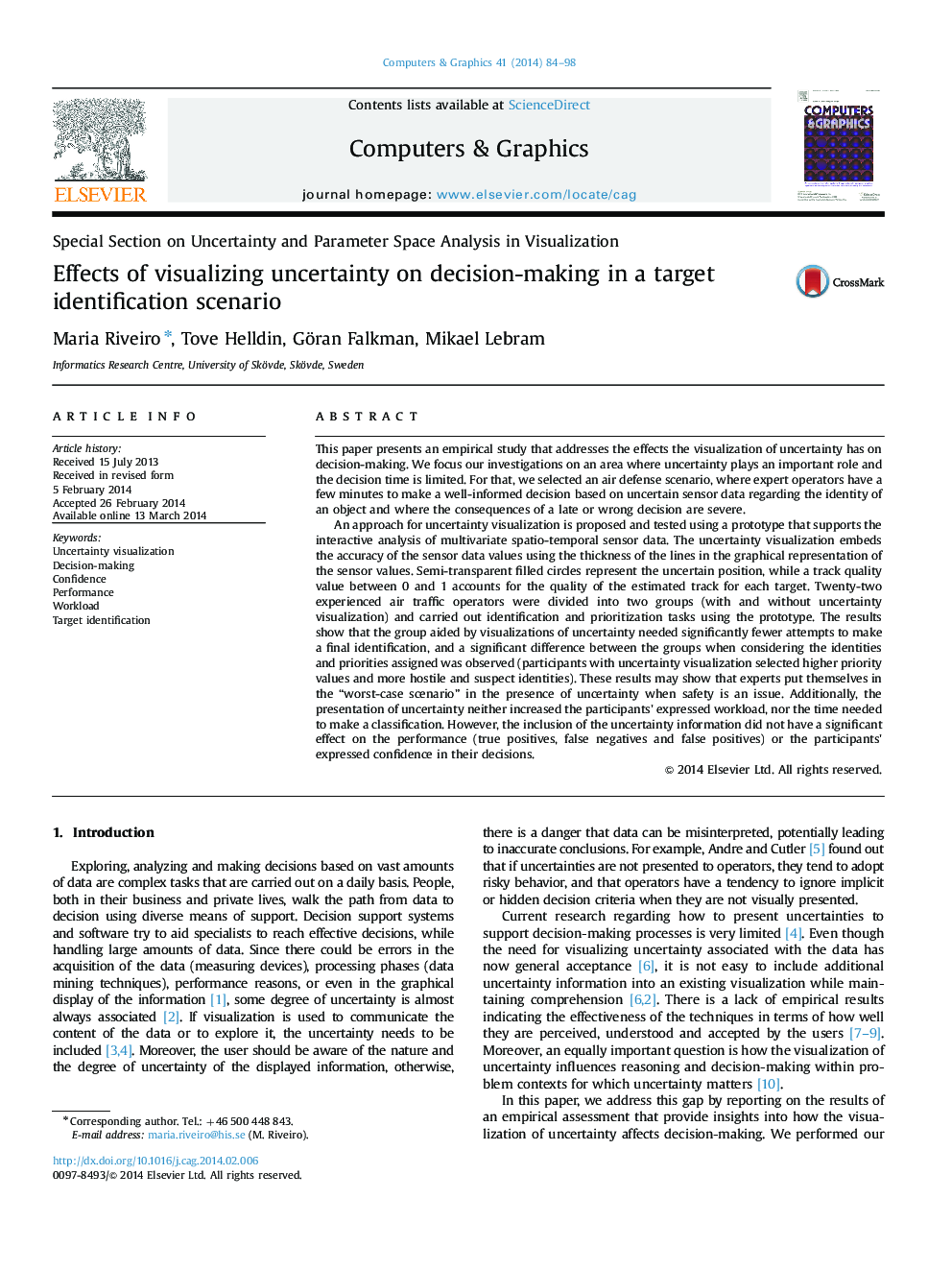| کد مقاله | کد نشریه | سال انتشار | مقاله انگلیسی | نسخه تمام متن |
|---|---|---|---|---|
| 442600 | 692306 | 2014 | 15 صفحه PDF | دانلود رایگان |
• Twenty-two experienced air traffic operators analyze spatio-temporal data with or without uncertainty visualizations.
• Target identification and prioritization tasks were conducted under high time-pressure and high cognitive load.
• Test group (with uncertainty visualization) needed significantly fewer attempts to make a final identification.
• Test group selected higher priority values and more hostile and suspect identities, without more workload or average time.
• No significant difference was observed regarding performance or expressed confidence in the decisions.
This paper presents an empirical study that addresses the effects the visualization of uncertainty has on decision-making. We focus our investigations on an area where uncertainty plays an important role and the decision time is limited. For that, we selected an air defense scenario, where expert operators have a few minutes to make a well-informed decision based on uncertain sensor data regarding the identity of an object and where the consequences of a late or wrong decision are severe.An approach for uncertainty visualization is proposed and tested using a prototype that supports the interactive analysis of multivariate spatio-temporal sensor data. The uncertainty visualization embeds the accuracy of the sensor data values using the thickness of the lines in the graphical representation of the sensor values. Semi-transparent filled circles represent the uncertain position, while a track quality value between 0 and 1 accounts for the quality of the estimated track for each target. Twenty-two experienced air traffic operators were divided into two groups (with and without uncertainty visualization) and carried out identification and prioritization tasks using the prototype. The results show that the group aided by visualizations of uncertainty needed significantly fewer attempts to make a final identification, and a significant difference between the groups when considering the identities and priorities assigned was observed (participants with uncertainty visualization selected higher priority values and more hostile and suspect identities). These results may show that experts put themselves in the “worst-case scenario” in the presence of uncertainty when safety is an issue. Additionally, the presentation of uncertainty neither increased the participants׳ expressed workload, nor the time needed to make a classification. However, the inclusion of the uncertainty information did not have a significant effect on the performance (true positives, false negatives and false positives) or the participants׳ expressed confidence in their decisions.
Figure optionsDownload high-quality image (202 K)Download as PowerPoint slide
Journal: Computers & Graphics - Volume 41, June 2014, Pages 84–98
